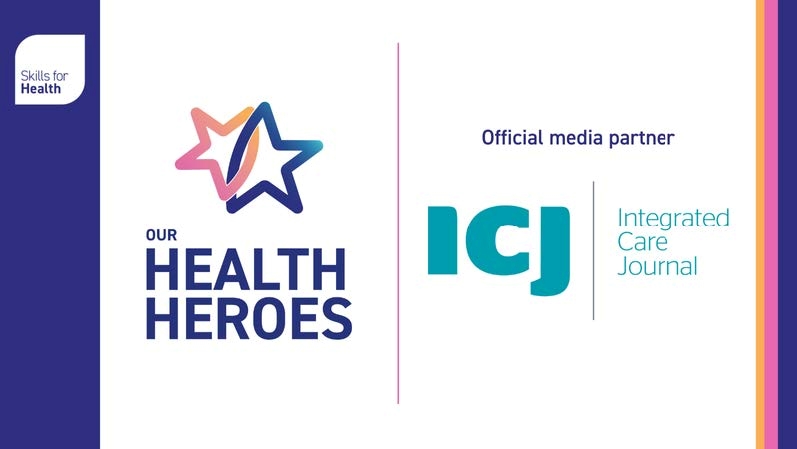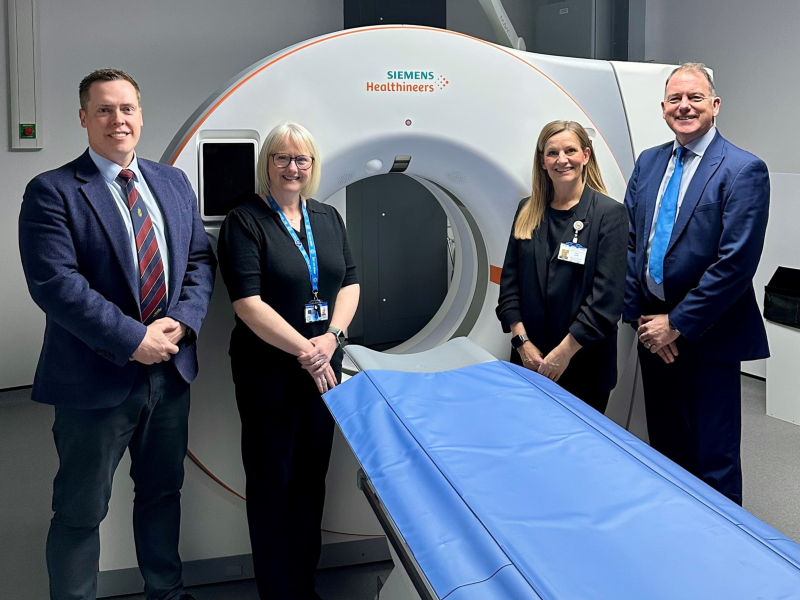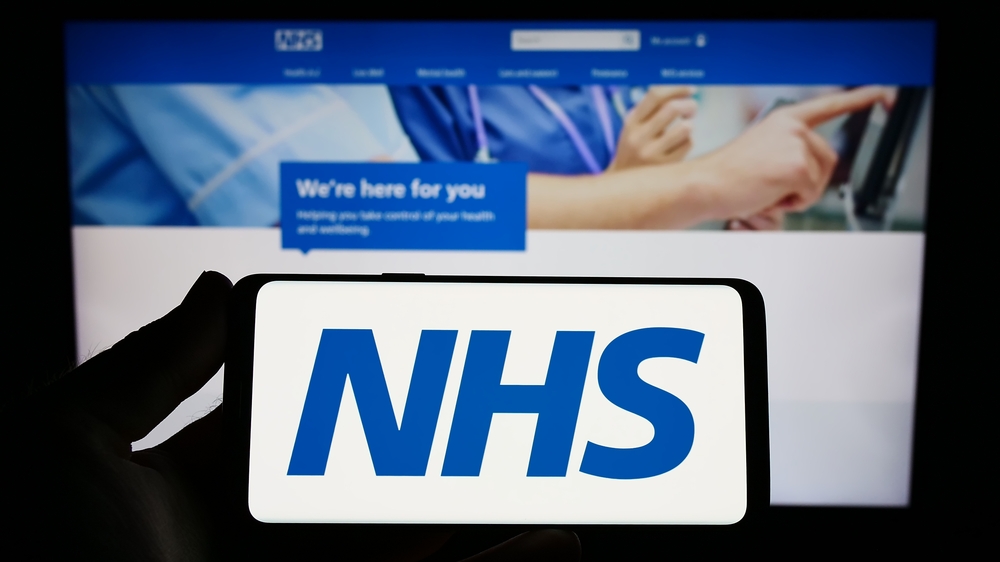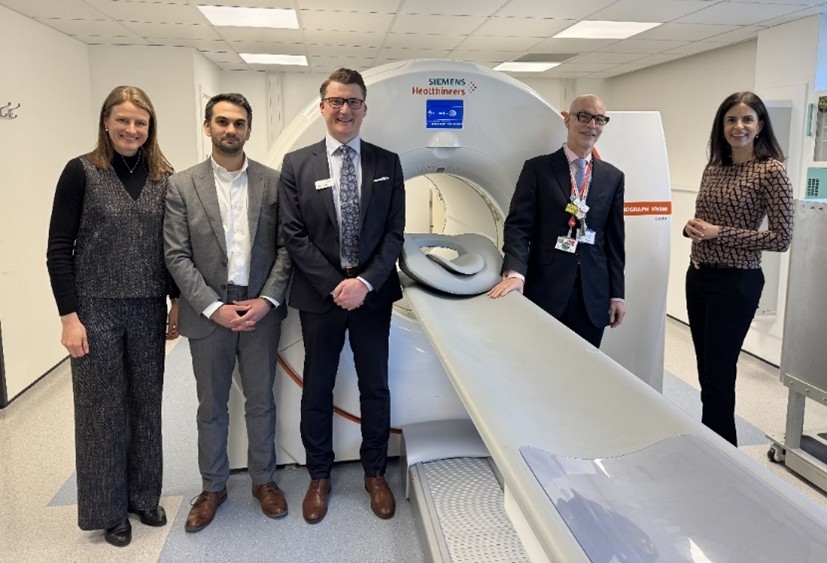Governments must get a handle on AI – here’s why

The integration of AI into healthcare systems around the world represents one of the most significant technological shifts of our time. However, realising this potential while safeguarding against risks requires urgent and thoughtful government action, writes Clive Hudson.
Artificial intelligence (AI) is rapidly transforming healthcare systems around the world, offering unprecedented opportunities to improve patient outcomes, increase efficiency and reduce costs. However, as an innovator with over 40 years of experience in the field of AI, I believe we are at a critical juncture where governments globally must take decisive action to harness AI’s potential while mitigating its risks.
The current state of AI in healthcare is one of both promise and peril. While we’re seeing exciting applications emerge, from AI-assisted diagnostics to personalised treatment plans, there are also serious concerns around data privacy, algorithmic bias and the potential displacement of human healthcare workers. Governments worldwide, including the new UK administration, have a crucial opportunity and indeed a clear responsibility, to shape the future of AI in healthcare through thoughtful regulation and strategic investment.
The transformative potential of AI in healthcare
AI is already demonstrating its ability to revolutionise healthcare delivery. Machine learning algorithms are enhancing the accuracy of medical imaging analysis, natural language processing is streamlining clinical documentation and predictive analytics are helping identify at-risk patients before their conditions worsen. These applications are just the tip of the iceberg.
However, to fully realise AI’s potential, we need a robust regulatory framework that promotes innovation while protecting patients. A gold standard for global AI regulation in healthcare should prioritise:
- Patient safety and privacy
- Algorithmic transparency and accountability
- Equitable access to AI-powered healthcare solutions
- Interoperability and data sharing standards
- Continuous monitoring and evaluation of AI systems
Such a framework would provide clarity for developers, build trust among healthcare providers and patients and create a level playing field for international collaboration.
The need for dynamic regulatory frameworks
Current regulatory approaches are woefully inadequate for the rapidly evolving landscape of AI. Traditional regulatory bodies move too slowly and often lack the technical expertise to effectively oversee AI technologies. We need a new paradigm.
I propose that governments need to create specialised AI regulatory authorities with a mandate to develop and enforce dynamic regulations. This authority would be empowered to adapt rules in real-time as technologies evolve, guided by core principles of:
- Biodiversity
Ensuring AI systems support, rather than threaten, the rich diversity of life on our planet.
- Sustainability
Promoting AI applications that contribute to long-term environmental and social well-being.
- Transparency
Requiring clear explanations of how AI systems make decisions in healthcare contexts and establishing clear lines of responsibility for AI-driven outcomes.
Any nation’s regulatory body must be staffed by interdisciplinary experts who understand both the technical intricacies of AI and its broader societal implications. It should use AI technologies itself to stay ahead of the curve and offer proactive guidance to the healthcare sector.
Economic impact and strategic investment
The economic potential of AI in healthcare is staggering. By automating routine tasks, optimising resource allocation and enabling more personalised interventions, AI could dramatically reduce healthcare costs while improving outcomes.
However, realising these benefits requires strategic government investment and support. Governments should take a multifaceted approach, funding AI research and development in priority healthcare areas, incentivising AI adoption among healthcare providers, investing in robust data infrastructure and interoperability standards, and supporting AI startups and small businesses in the healthcare sector. These initiatives would create a fertile ecosystem for innovation, accelerating the development and implementation of AI solutions that can transform healthcare delivery and outcomes.
While pursuing these economic benefits, policymakers must remain vigilant about potential negative consequences, such as job displacement or the exacerbation of health inequalities. Government policies should aim to distribute the gains from AI equitably and provide support for workers transitioning to new roles.
Challenges and ethical considerations
As we push the boundaries of AI in healthcare, there are also significant ethical challenges to confront. Data security and patient privacy are paramount concerns. Current day AI systems require vast amounts of sensitive health data to function effectively, creating potential vulnerabilities to breaches or misuse.
Moreover, we must be vigilant about biases in AI systems. If trained on non-representative datasets, AI could perpetuate or even amplify existing health disparities. Governments must mandate rigorous testing and auditing of AI systems to detect and mitigate such biases.
Another crucial consideration is maintaining the human element in healthcare. AI should augment, not replace, human expertise and compassion. Policies should encourage the development of AI systems that enhance the capabilities of healthcare professionals rather than seeking to automate them out of the equation.
The concept of ‘super intelligence’ in healthcare AI
Looking to the future, we must grapple with the concept of ‘superintelligence’ in healthcare AI. By this, I mean AI systems that surpass human capabilities not just in narrow tasks, but in reasoning, problem-solving and even creativity across a wide range of knowledge domains.
Developing such systems requires a cross-disciplinary approach, drawing insights from fields as diverse as neuroscience, psychology, ethics and computer science. It is not simply a matter of scaling up existing AI models, but of fundamentally rethinking how we approach machine intelligence.
It is possible to draw important lessons from past technological advancements. The rapid rise of social media, for instance, brought unforeseen consequences for mental health and social cohesion. With healthcare AI, the stakes are even higher, making it essential to anticipate potential negative outcomes and build safeguards from the ground up.
A key aspect of superintelligent AI in healthcare would be its ability to reason ethically and align its goals with human values. This is no small feat and will require sustained collaboration between AI researchers, ethicists and healthcare professionals.
Recommendations for policymakers
First and foremost, governments should establish a specialised AI regulatory body. This agency should have the authority and expertise to develop and enforce dynamic regulations that keep pace with technological advancements. Such a body would be crucial in navigating the complex and rapidly evolving landscape of AI in healthcare.
Investing in AI education and workforce development is equally important. We need to build a workforce capable of developing, implementing and overseeing AI systems in healthcare. This requires significant investment in STEM education and interdisciplinary programs combining technical skills with healthcare knowledge. By fostering this talent pipeline, we can ensure that we have the human capital necessary to drive innovation and responsible AI adoption in healthcare.
Governments should also promote collaboration between academia, industry and government. Innovation thrives when ideas flow freely between sectors. Creating frameworks for data sharing, joint research initiatives and knowledge transfer between universities, private companies and public health institutions can accelerate progress and ensure that AI developments are aligned with real-world healthcare needs.
Embedding ethical guidelines in AI development is crucial. Ethics should not be an afterthought but an integral part of the process. Governments should mandate the integration of ethical considerations at every stage of the AI lifecycle, from design to deployment and ongoing monitoring. This approach will help build trust in AI systems and ensure they align with societal values.
Given the global nature of AI development in healthcare, supporting international cooperation is vital. Governments should work together to establish common standards, share best practices and address cross-border challenges such as data governance and algorithmic accountability. This collaborative approach can help create a more cohesive and effective global AI ecosystem in healthcare.
Prioritising explainable AI is another key recommendation. In healthcare, it is crucial that AI systems can explain their decision-making processes. Policymakers should incentivise the development of interpretable AI models and require transparency in high-stakes healthcare applications. This transparency will be essential for building trust among healthcare providers and patients.
Finally, governments should invest in robust testing and validation frameworks. Before AI systems are deployed in healthcare settings, they must undergo rigorous testing to ensure safety, efficacy and fairness. Establishing clear guidelines and supporting the development of standardised evaluation protocols will be crucial in ensuring that AI systems meet the high standards required in healthcare contexts.
Time for action
The integration of AI into healthcare systems around the world represents one of the most significant technological shifts of our time. Its potential to improve patient outcomes, increase efficiency and drive medical breakthroughs is immense. However, realising this potential while safeguarding against risks requires urgent and thoughtful government action.
We stand at a crossroads. With the right policies and investments, we can shape an AI-enabled healthcare future that is more effective, equitable and humane. But if we fail to act, we risk a future where AI exacerbates health inequalities, compromises patient privacy or makes critical decisions without adequate oversight.
My vision is for a healthcare ecosystem where AI enhances and extends human capabilities, where patients benefit from personalised and proactive care and where the fruits of AI innovation are shared equitably across society. Achieving this vision requires more than just technological prowess – it demands political will, ethical foresight and global cooperation.
The time for governments to act is now. By establishing dynamic regulatory frameworks, investing strategically in AI development and education and prioritising ethical considerations, we can ensure that AI becomes a powerful force for good in global healthcare. The decisions we make today will shape the health outcomes of generations to come. Let us seize this opportunity to create a healthier, more equitable world for all.









